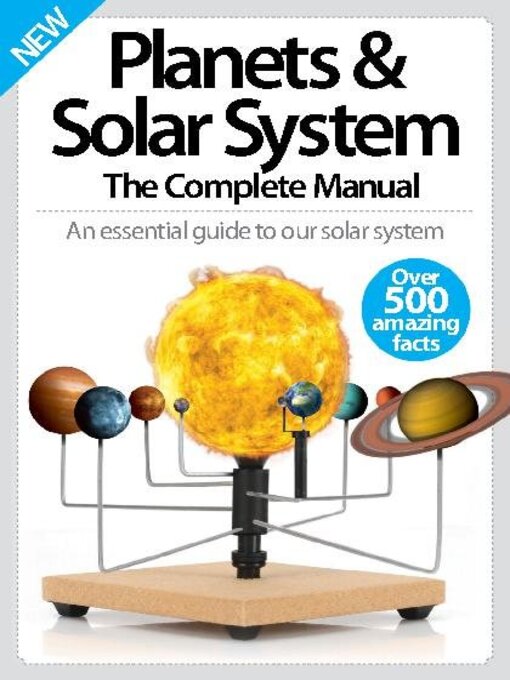Please type the description of the issue
Welcome to Planets & Solar System The Complete Manual
Birth of the SOLAR SYSTEM • How did our Solar System form? Astronomers thought they knew. But now, new research is turning many of the old ideas on their heads
The birth of the planets • Our Solar System was cooked up in a swirling cloud of gas and dust
Inside the Sun • The giant star that keeps us all alive
MERCURY • Small, dense, incredibly hot and the closest planet to the Sun. Until recently we’ve known very little about Mercury, so join us on a journey to discover the secrets of the smallest planet in the Solar System
Mercury inside and out • Mercury has a huge core and a high concentration of core iron
Mercury mapped by Mariner
On the surface • Mercury is a planet of extreme variations in temperature, in its surface features and in its magnetic field
VENUS • Venus is the most Earth-like planet in the Solar System, but there are a few key differences between the two planets, such as clouds of acid and temperatures hot enough to melt lead. Read on to discover more about Earth’s ‘evil twin
Venus inside and out • We don’t know much of Venus’s interior, and what we know of its atmosphere isn’t pretty
On the surface • Venus is smooth, with a young surface – but it is also covered in volcanoes and lava flows that may have lasted for millions of years
Mountains, volcanoes and craters • The extraordinary features that dominate the surface of Venus
EARTH • When it comes to studying the planets of the Solar System we often overlook the Earth. However, as the only planet known to be able to support life, there’s still lots to learn about our fascinating home planet
Earth inside and out • How Earth formed into the habitable world we know today
MARS • The fourth planet from the Sun and the seventh largest, the red and varied landscape of this once Earth-like planet has fascinated humanity since we first viewed it in the night sky. We explore just why this planet holds such allure
Mars inside and out • It may resemble Earth, but Mars is a very different planet
JUPITER • Volatile and violent in nature and named after the Roman king of gods, the largest world in our Solar System has twice the mass of all other planets combined. Discover more about the gas giant that is king of the planets
Jupiter inside and out • Jupiter gets more interesting the closer you get to its centre
In the clouds • It might not have a surface like a rocky planet would, but the clouds of Jupiter are a fascinating phenomena worth exploring
The changing Great Red Spot • A storm with the circumference of Earth that’s raged for centuries
SATURN • A breathtaking and complex ring system, moons that might have the capacity to support life and awesome storms that rage at over 1,000mph. There’s good reason why this beautiful planet is called the ‘jewel’ of the Solar System
Saturn inside and out • Saturn is often compared with Jupiter, but it can hold its own
In the clouds • Saturn’s atmosphere has some similarities to Jupiter’s
The ring system • Saturn's crown jewel
URANUS • The Solar System’s forgotten planet has long been thought of as a dark, cold, characterless world, but the seventh planet from the Sun has its own unique twist and some fascinating features
Uranus inside and out • It has a very similar structure to Neptune but this ice giant still retains its mysteries
NEPTUNE • A frozen world on the outermost limits of our Solar System, Neptune is a mysterious planet with its own unique characteristics
Neptune inside and out • Neptune is a bright blue, warm and experiences active...

